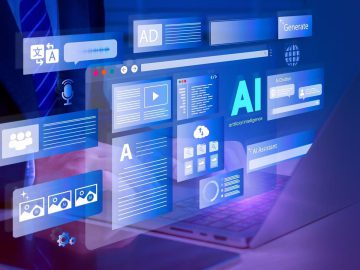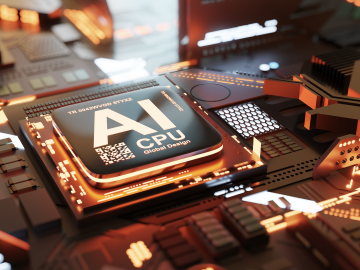Generative AI is rapidly transforming how businesses operate, but many organizations are still in … [+]
Adobe Stock
In the world of business technology, generative AI has emerged as a transformative force, promising to revolutionize how enterprises operate. Recently, I had the opportunity to discuss the impact of generative AI on the enterprise with Pascal Brier, Chief Innovation Officer and Member of the Group Executive Committee at Capgemini. Our conversation revealed fascinating insights into the current state of generative AI adoption, the challenges businesses face, and the exciting future that lies ahead.
The Current State Of Generative AI Adoption
Generative AI has quickly become a boardroom priority, with Brier noting that “about 96 percent of the boardrooms currently have GenAI on the agenda and have one or two sessions being set before the end of the year.” This heightened interest has translated into a significant increase in adoption rates. According to Capgemini’s research, the percentage of large companies that have adopted generative AI has jumped from 6% last year to 24% this year.
However, the return on investment (ROI) from these adoptions is still relatively low, ranging from 4% to 7%. Brier suggests that this modest ROI shouldn’t be seen as disappointing but rather as a sign that we’re still in the early stages of generative AI’s potential. “If we think it’s only the beginning, which is what I tend to think, and we’re going to get much more than that, then we can say that, yes, there has been some hype, but there is a true thing behind the hype. It’s just a matter of time,” Brier explains.
Challenges In Implementing Generative AI
While the potential of generative AI is immense, implementing it effectively comes with its own set of challenges. Brier identifies several key areas that businesses need to focus on to successfully integrate AI into their operations.
First and foremost is platform enablement. Organizations need to carefully consider their technology choices and how they’ll build their overall AI environment. This isn’t just about selecting the right software; it’s about creating an ecosystem that can support and scale AI initiatives across the enterprise. Brier emphasizes that this decision is more complex than simply choosing between vendors. Companies must consider factors such as integration capabilities, scalability, and alignment with existing IT infrastructure.
Governance is another crucial aspect that companies often discover as they embark on their AI journey. Managing AI models, ensuring security, maintaining ethical standards, and aligning AI use with company culture are all part of this challenge. Brier notes that as AI becomes more integrated into business processes, companies need to establish clear guidelines and oversight mechanisms to manage potential risks and ensure responsible AI use.
Identifying the right use cases for AI is also critical for success. Brier suggests three domains of applications for generative AI: Everyday AI (enhancing existing applications), AI in products or services, and AI in the innovation journey. Each of these areas presents unique opportunities and challenges. Companies need to carefully evaluate where AI can add the most value to their operations and strategically prioritize their AI initiatives.
Training and skills development emerge as another significant challenge. Preparing the workforce for AI adoption is critical for realizing the technology’s full potential. Brier emphasizes the importance of training people not just on technical skills but on how to interact effectively with AI systems, understand security and ethical considerations, and recognize the costs associated with AI use. This holistic approach to AI education helps ensure that employees can work alongside AI systems effectively and responsibly.
Finally, responsible use and cost management are crucial considerations. Organizations need to be aware of both the financial and environmental costs of AI implementation. Brier points out that while the current usage might be moderate, as AI scales across the enterprise, these costs will become increasingly significant. Companies need to develop strategies to monitor and manage these costs effectively, balancing the benefits of AI with its resource requirements.
The Future Of AI In The Enterprise
Looking ahead, Brier sees several exciting trends shaping the future of AI in the enterprise. One key development is the diversification of AI models. “We’re going to use different types of models,” Brier predicts. This evolution moves beyond the current focus on selecting a single, all-encompassing model. Instead, organizations will likely employ a mix of large, generic models alongside smaller, specialized models trained for specific needs. This approach allows for greater flexibility and efficiency, tailoring AI capabilities to particular tasks or domains within the enterprise.
Another significant trend on the horizon is the emergence of hybrid AI ecosystems. Brier envisions a future where different types of AI work in concert, creating more sophisticated and capable systems. “Most solutions will use different types of knowledge-based generative AI,” he explains. This hybrid approach combines the strengths of various AI technologies, potentially including traditional machine learning, natural language processing, and other specialized AI tools. By integrating these diverse AI capabilities, enterprises can create more robust, versatile, and intelligent systems that can tackle complex challenges across various business domains.
Perhaps the most intriguing development Brier foresees is the rise of AI agents. “Everybody will tell you about agents and agentic systems,” he notes, highlighting the growing buzz around this concept in tech circles. These AI agents represent a significant leap forward in AI functionality and autonomy. At their most basic level, AI agents are specialized software robots trained to perform specific tasks on behalf of users. However, the potential of these agents extends far beyond simple task automation. Brier envisions a progression from single-purpose agents to complex multi-agent systems capable of interacting with each other and making autonomous decisions. This could revolutionize how businesses operate, with AI agents managing everything from supply chains to customer interactions with minimal human intervention.
Embracing the AI Revolution
As we stand on the cusp of this AI revolution, it’s clear that the impact of generative AI on the enterprise will be profound and far-reaching. While challenges remain, particularly in areas of governance, training, and responsible use, the potential benefits are too significant to ignore.
Brier’s insights underscore the importance of a thoughtful, strategic approach to AI adoption. As he puts it, “There is no magic formula… companies have to consider it as one of their five things that they need to look at.”
For business leaders, the message is clear: the time to engage with generative AI is now. By understanding its potential, addressing the challenges head-on, and preparing for the exciting developments on the horizon, enterprises can position themselves to thrive in the AI-powered future that’s rapidly unfolding before us.





